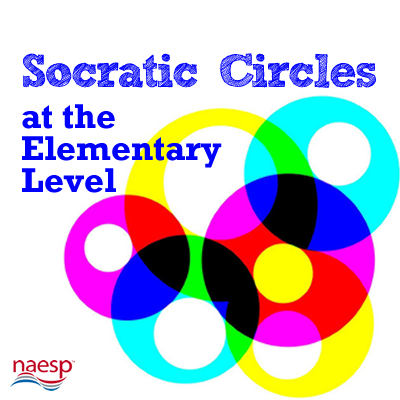Yes, Elementary Students Can Use Socratic Circles
By Dondi Frisinger Communicator December 2014, Volume 38, Issue 4 If you’ve heard about Socratic Circles as a teaching strategy, you probably think it’s best used at the secondary level. But at my school, Walker Elementary in Springdale, Arkansas, we’ve found Socratic Routines/Circles to be beneficial for our kindergarten through fifth-grade students.
By Dondi Frisinger
Communicator
December 2014, Volume 38, Issue 4
 If you’ve heard about Socratic Circles as a teaching strategy, you probably think it’s best used at the secondary level. But at my school, Walker Elementary in Springdale, Arkansas, we’ve found Socratic Routines/Circles to be beneficial for our kindergarten through fifth-grade students.
If you’ve heard about Socratic Circles as a teaching strategy, you probably think it’s best used at the secondary level. But at my school, Walker Elementary in Springdale, Arkansas, we’ve found Socratic Routines/Circles to be beneficial for our kindergarten through fifth-grade students.
About four years ago, staff members at our school became familiar with the Socratic strategies through the teacher-training educational program at the Crystal Bridges Museum of American Art in Bentonville, Arkansas. Since then, several of our teachers have implemented Socratic Routines and/or Circles as a way to merge close, critical thinking and reading with student achievement.
How Socratic Routines/Circles Work
Named for the Greek philosopher Socrates, Socratic Routines/Circles are based on the idea that it’s more important to empower students to think for themselves than to just provide them with the right answers. Teachers facilitate respectful discussions about a text among small groups or whole group circles of students. They use open-ended questions to stimulate students’ thinking and guide students to use evidence to support their ideas.
This philosophy dovetails with the Visible Thinking framework, which involves giving students “thinking routines” for approaching ideas. These routines—asking, for instance, “What do you see? What do you think about that? What does it make you wonder?”—help students understand what they are learning and others’ viewpoints. We have found the “thinking routines” align perfectly with the Common Core State Standards where students are expected to state their answers and to support them with evidence. Recently, while observing a third-grade guided reading group, I listened as students answered questions with supporting evidence. They also responded to others in the group by stating if they agreed, disagreed, and why. It was a very natural conversation for the students.
Sample Activities
Early-elementary students can be taught routines to help them understand and discuss a text or work. Looking at works of art can be a great vehicle for this. For instance, at our school, first graders studied Norman Rockwall’s art. In a discussion, students conversed about the mood and symbolism of the artwork. Teachers guided students to follow a Socratic/Visual Thinking pattern: students should speak in complete sentences, state their positions clearly, and provide evidence to support their thinking. Students are also challenged to respond to others’ thinking of others by stating whether they agree or disagree and why.
In the upper-elementary grades, students can move from Socratic routines to Socratic Circles. These can be held in small groups or with the entire class. Socratic Circles involve mature conversations about articles or current events. Teachers are then able to step back and watch as students take over the conversations using the skills they acquired through Socratic Routines. It’s amazing to watch and hear students as they collaboratively communicate.
Resources
- The Visible Thinking website outlines core Socratic routines and many examples of how to apply them to classrooms.
- Making Thinking Visual by Ron Richart, Mark Church, and Karin Morrison offers a variety of thinking routines and practices.
- Though it focuses on middle and high school, ideas from Matt Copeland’s book, Socratic Circles can be adapted to the elementary level.
Dondi Frisinger is principal of Walker Elementary in Springdale, Arkansas.
—
Copyright © 2014. National Association of Elementary School Principals. No part of the articles in NAESP magazines, newsletters, or website may be reproduced in any medium without the permission of the National Association of Elementary School Principals. For more information, view NAESP’s reprint policy

